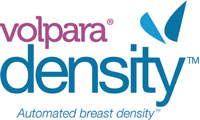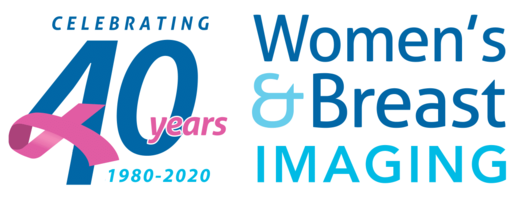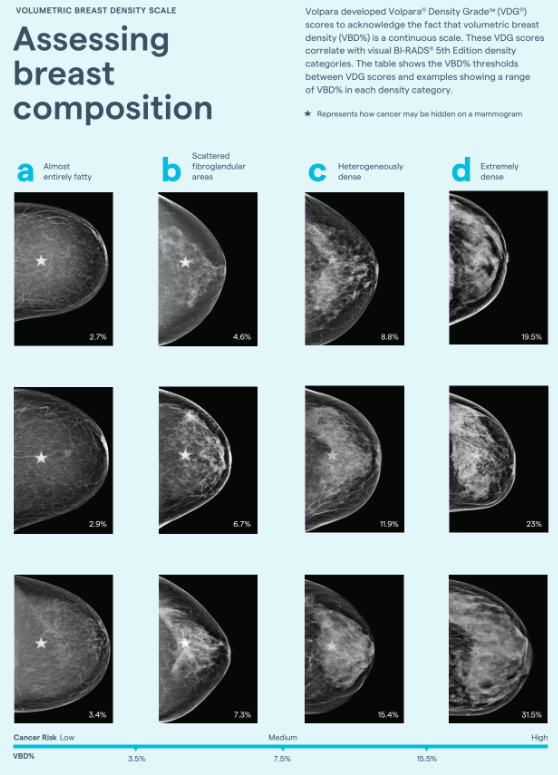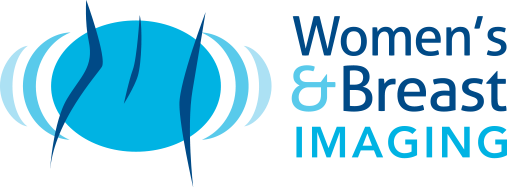About breast density
Breast density refers to the makeup of breast tissue. The only way to determine breast density is from your mammogram – not by the way your breasts look or feel.
Breast density is made up of fibroglandular tissue and fatty tissue. When breast have a lot of fibroglandular tissue, they can be judged as dense.
A number of factors can affect breast density, such as age, menopausal status, the use of drugs (such as menopausal hormone therapy), pregnancy and genetics.
Generally speaking, about 55% of women aged 40-50, and 33% of women over age 50 have high breast density. Density usually decreases with age.
Risks associated with breast density
- Dense breast tissue can mask cancer in mammograms which is why your clinician may recommend additional screening such as ultrasound.
- Some studies say that the risk of breast cancer is six times greater for women with dense breast compared to low density breasts.
Volumetric Breast Density Scale
Fatty tissue is transparent to x-rays and appears near black on a mammogram. Dense tissue (and cancer) stops x-rays and appears white.
Breast density is classified into four categories by radiologist. Your technician will be able to tell you what your breast density is after your mammogram.
Our clinic uses Volpara, a volumetric breast density measurement tool, to better assess your breast density and are able to offer you a more personalized management approach of your breast health based on your risk factors.
Percentage VDG (BI-RADS™) Populations*
[TBA: Table]
Volpara Density Grade™ has been FDA Approved and scientifi cally correlated to The American College of Radiology BI-RADS™ categories of breast density.
*The WBI BI-RADS distributions suggest a dense population compared to a more typical 10/40/40/10% distribution. The populations here are quite different. For example, the Greenville population has markedly above average BMI, hence, they have much bigger breasts on average, and thus, reduced breast density; the New Zealand data is screening from 45-70; the UT data might be more representative of an average North American population but has diagnostic and screening images in. DMIST found 10%, 43%, 39%, 8%, but remember that some US radiologists hardly ever use BI-RADS 1 or 4.
Women’s & Breast Imaging in Perth is First in Australia to offer women Advanced Breast Density Measurement to improve early detection of cancer. Our clinic offers better personalised breast care; Australia’s first clinical user to install VolparaDensity breast imaging software.

If you have dense breasts
High breast density is a normal condition, but it may affect the ability of the radiologist to find cancers on the mammogram, particularly when they are very small (and more treatable).
Supplementary screening (such as tomosynthesis and/or ultrasound) can substantially improve cancer detection in women with high breast density and together with your clinician you can decide what the right steps are for you.
If your breasts are not dense, other factors may still place you at increased risk of breast cancer – including significant family history, and you should still get an annual mammogram starting at 40.
Will you still need a mammogram if you have dense breast?
Yes. There are certain tissue characteristics, like microcalcifications, that are imaged very well by mammography, but poorly or not at all by other imaging methods.
Importance of screening
Screening mammograms have been proven to reduce breast cancer deaths so keep having them.


